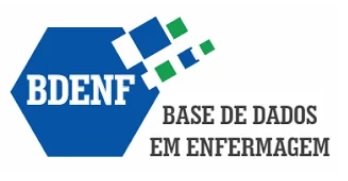Tactical and Operational Planning for Coping With the Pandemic by the Sars-Cov-2 in Participant Hospital of the Magnet Journey
Keywords:
Pandemics, Health Management, Planning, Magnet HospitalsAbstract
Objective: To describe a tactical operational plan implemented to face the SARS-CoV-2 pandemic in a Brazilian private hospital of high complexity inserted in the Magnet Journey. Method: Experience report that involved the description of the scenario and the dynamics of the elaboration of the tactical operational plan and of the actions structured on the human resources axes, development and training, care processes, and material resources. Final considerations: ensuring internal capacity for the necessary supplies and equipment, a competent workforce to carry out the processes with quality and efficiency, and institutional planning are key elements to overcome barriers and for the successful implementation of a tactical plan.
References
Monto AS, Webster RG. Influenza pandemics: History and lessons learned. In: Webster RG, Monto AS, Braciale TJ. Textbook of Influenza. [s.l]: Wiley & Sons; 2013. p.20-34. doi:10.1002/9781118636817.ch2. DOI: https://doi.org/10.1002/9781118636817.ch2
Johns Hopkins University Center for Systems Science and Engineering. Coronavirus COVID-19 global cases by Johns Hopkins CSSE [Internet]. 2020 apr 1. [citado 2020 nov 30]. Disponível em: https://gisanddata.maps.arcgis.com/apps/opsdashboard/index.html#/bda7594740fd40299423467b48e9ecf6
Willan J, King AJ, Jeffery K, Bienz N. Challenges for NHS hospitals during covid-19 epidemic. BMJ. 2020 mar;368:m1117. doi: 10.1136/bmj.m1117. DOI: https://doi.org/10.1136/bmj.m1117
De Groeve T. Science for policy handbook. In: Knowledge-Based. Science for policy handbook. Chapter 16. https://doi.org/10.1016/B978-0-12-822596-7.00016-4 DOI: https://doi.org/10.1016/B978-0-12-822596-7.00016-4
Tinkham MR. Practice models: developing, revising, and adopting the best structure for your organization. AORN J. 2014 Feb;99(2):312-4. doi: 10.1016/j.aorn.2013.11.006 DOI: https://doi.org/10.1016/j.aorn.2013.11.006
Byrne AL, Baldwin A, Harvey C. Whose centre is it anyway? Defining person centred care in nursing: An integrative review. PLOS One. 2020 mar 10;15(3):e0229923. doi: 10.1371/journal.pone.0229923. DOI: https://doi.org/10.1371/journal.pone.0229923
Hulshof PJ, Boucherie RJ, Hans EW, Hurink JL. Tactical resource allocation and elective patient admission planning in care processes. Health Care Manag Sci. 2013 jun;16(2):152-66. doi: 10.1007/s10729-012-9219-6. DOI: https://doi.org/10.1007/s10729-012-9219-6
Drenkard K, Rigotti G, Hanfling D, Fahlgren TL, LaFrancois G. Healthcare system disaster preparedness, part 1: readiness planning. J Nurs Adm. 2002 sep;32(9),461-469. doi: 10.1097/00005110-200209000-00008. DOI: https://doi.org/10.1097/00005110-200209000-00008
Herstein JJ, Biddinger PD, Gibbs SG, Le AB, Jelden KC, Hewlett AL, et al. Personnel management and biosecurity of U.S. High-Level isolation units. JONA: The Journal of Nursing Administration. 2018;48(11):553-60. doi:10.1097/nna.0000000000000679. DOI: https://doi.org/10.1097/NNA.0000000000000679
Leadership practices and patient outcomes in magnet® vs. non-magnet hospitals. (2019). JONA: The Journal of Nursing Administration. 2019 oct;49(Supplement):S50–S55. doi:10.1097/nna.0000000000000798. DOI: https://doi.org/10.1097/NNA.0000000000000798
Brooks SK, Dunn R, Amlôt R, Rubin GJ, Greenberg N. A systematic, thematic review of social and occupational factors associated with psychological outcomes in healthcare employees during an infectious disease outbreak. J Occup Environ Med. 2018 mar;60(3):248-257. doi: 10.1097/JOM.00000000000012. DOI: https://doi.org/10.1097/JOM.0000000000001235
Lai J, Ma S, Wang Y, Cai Z, Hu J, Wei N et al. Factors associated with mental health outcomes among health care workers exposed to coronavirus disease 2019. JAMA. 2020 mar 2;3(3):e203976. doi: 10.1001/jamanetworkopen.2020.3976. DOI: https://doi.org/10.1001/jamanetworkopen.2020.3976
Liao X, Wang B, Kang Y. Novel coronavirus infection during the 2019-2020 epidemic: preparing intensive care units – the experience in Sichuan Province, China. Intensive Care Med. 2020 feb;46(2):357-360. doi: 10.1007/s00134-020-05954-2. DOI: https://doi.org/10.1007/s00134-020-05954-2
Farrar JA. Pandemic influenza: allocating scarce critical care resources. J Nurs Adm. 2010 jan;40(1):1-3. doi: 10.1097/NNA.0b013e3181c47b4e. DOI: https://doi.org/10.1097/NNA.0b013e3181c47b4e
Patel A, Lee L, Pillai SK, Valderrama AL, Delaney LJ, Radonovich L. Approach to prioritizing respiratory protection when demand exceeds supplies during an influenza pandemic: a call to action. Health Secur. 2019 mar/apr;17(2):152-155. doi:10.1089/hs.2019.0027. DOI: https://doi.org/10.1089/hs.2019.0027
Downloads
Published
How to Cite
Issue
Section
License
Copyright (c) 2024 Revista Paulista de Enfermagem

This work is licensed under a Creative Commons Attribution 4.0 International License.
Propriedade intelectual
Todo o conteúdo da REPEn, exceto onde está identificado, está licenciado sob uma Licença Creative Commons do tipo atribuição CC-BY (https://creativecommons.org/licenses/by/4.0/deed.pt_BR).










